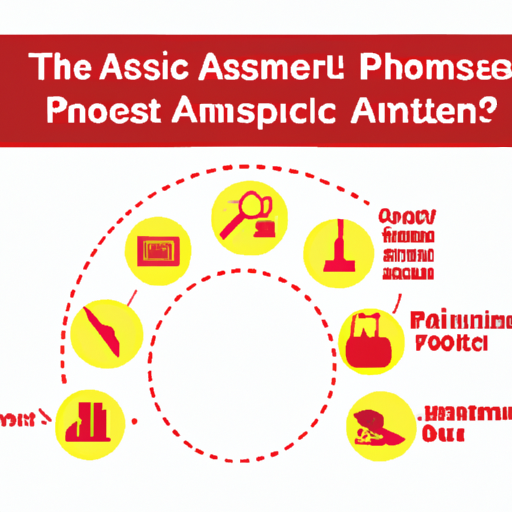Assessment kits are essential tools used in various fields such as education, healthcare, and business to evaluate and measure an individual's skills, knowledge, or abilities. These kits typically include a set of standardized tests, questionnaires, and other assessment tools that are used to gather data and provide insights into an individual's performance or capabilities. In this article, we will explore the common production processes involved in creating assessment kits.

2. Content Development: Once the needs assessment is complete, the next step is to develop the content for the assessment kit. This may involve creating test items, questionnaires, scoring rubrics, and other assessment tools that align with the objectives of the assessment. Content development often requires input from subject matter experts, psychologists, and other professionals to ensure the validity and reliability of the assessment tools.
3. Pilot Testing: Before finalizing the assessment kit, it is important to conduct pilot testing to evaluate the effectiveness and usability of the assessment tools. This involves administering the tests to a small sample of individuals and collecting feedback on the clarity, relevance, and accuracy of the assessment items. Pilot testing helps to identify any potential issues or errors in the assessment kit that need to be addressed before it is released to a wider audience.
4. Production and Packaging: Once the assessment kit has been developed and tested, it is ready for production and packaging. This may involve printing test booklets, assembling scoring materials, and packaging the assessment tools in a user-friendly format. The production process also includes quality control checks to ensure that the assessment kit meets the required standards and specifications.
5. Distribution and Training: After the assessment kit has been produced and packaged, it is ready for distribution to users. This may involve selling the kit to schools, healthcare facilities, or businesses, or providing it to individuals for self-assessment. In some cases, training may be required to ensure that users understand how to administer the assessments correctly and interpret the results accurately.
6. Continuous Improvement: The production process for assessment kits does not end with distribution. It is important to continuously monitor and evaluate the effectiveness of the assessment tools and make improvements as needed. This may involve updating test items, revising scoring rubrics, or incorporating new technologies to enhance the assessment process.
In conclusion, the production processes for assessment kits involve a series of steps from needs assessment to continuous improvement. By following these processes, producers can create high-quality assessment tools that provide valuable insights into an individual's skills, knowledge, and abilities. Whether used in education, healthcare, or business, assessment kits play a crucial role in helping individuals reach their full potential and achieve their goals.
Assessment kits are essential tools used in various fields such as education, healthcare, and business to evaluate and measure an individual's skills, knowledge, or abilities. These kits typically include a set of standardized tests, questionnaires, and other assessment tools that are used to gather data and provide insights into an individual's performance or capabilities. In this article, we will explore the common production processes involved in creating assessment kits.

2. Content Development: Once the needs assessment is complete, the next step is to develop the content for the assessment kit. This may involve creating test items, questionnaires, scoring rubrics, and other assessment tools that align with the objectives of the assessment. Content development often requires input from subject matter experts, psychologists, and other professionals to ensure the validity and reliability of the assessment tools.
3. Pilot Testing: Before finalizing the assessment kit, it is important to conduct pilot testing to evaluate the effectiveness and usability of the assessment tools. This involves administering the tests to a small sample of individuals and collecting feedback on the clarity, relevance, and accuracy of the assessment items. Pilot testing helps to identify any potential issues or errors in the assessment kit that need to be addressed before it is released to a wider audience.
4. Production and Packaging: Once the assessment kit has been developed and tested, it is ready for production and packaging. This may involve printing test booklets, assembling scoring materials, and packaging the assessment tools in a user-friendly format. The production process also includes quality control checks to ensure that the assessment kit meets the required standards and specifications.
5. Distribution and Training: After the assessment kit has been produced and packaged, it is ready for distribution to users. This may involve selling the kit to schools, healthcare facilities, or businesses, or providing it to individuals for self-assessment. In some cases, training may be required to ensure that users understand how to administer the assessments correctly and interpret the results accurately.
6. Continuous Improvement: The production process for assessment kits does not end with distribution. It is important to continuously monitor and evaluate the effectiveness of the assessment tools and make improvements as needed. This may involve updating test items, revising scoring rubrics, or incorporating new technologies to enhance the assessment process.
In conclusion, the production processes for assessment kits involve a series of steps from needs assessment to continuous improvement. By following these processes, producers can create high-quality assessment tools that provide valuable insights into an individual's skills, knowledge, and abilities. Whether used in education, healthcare, or business, assessment kits play a crucial role in helping individuals reach their full potential and achieve their goals.